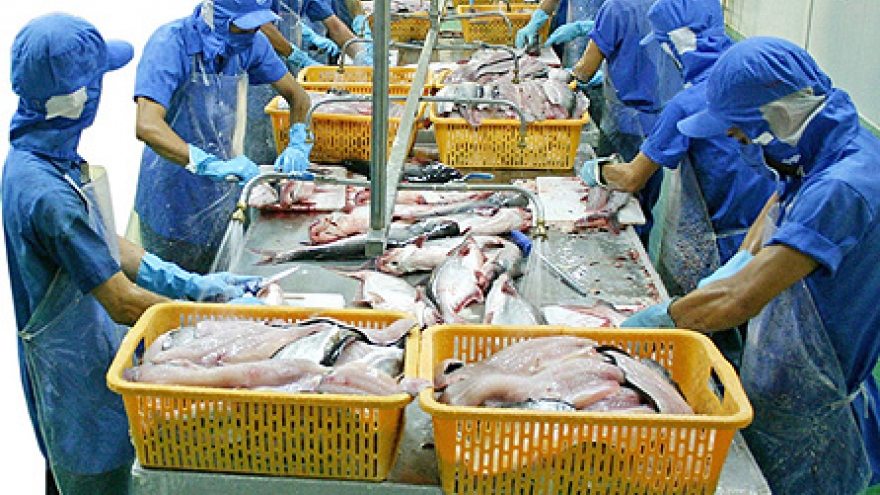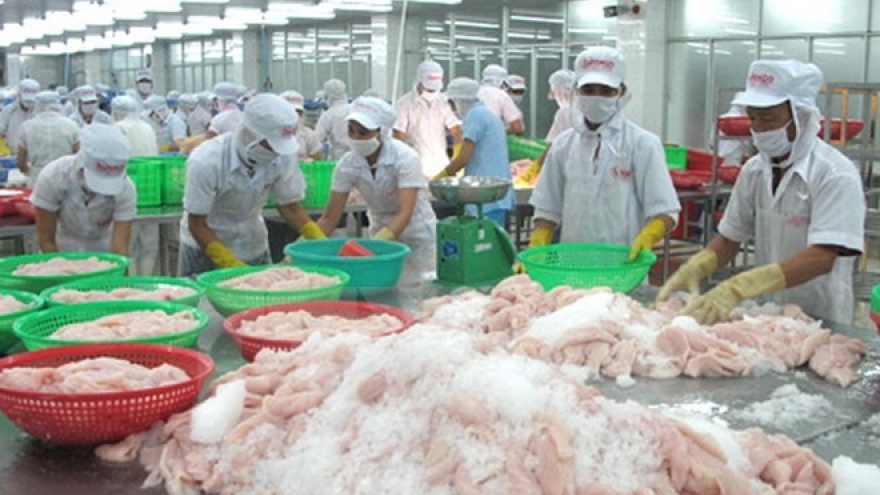Vietnam to become global seafood processing centre
Vietnam is likely to become a global seafood processing centre in the future thanks to its competitive labour cost and increasing number of high-quality processing facilities, an expert has said.
 |
Vietnam has spent nearly 800 million USD importing aquatic materials, mainly shrimp, tuna, cuttlefish, for processing and re-exporting, he said, stressing this shows that the country plays increasingly vital role in the global seafood supply chain.
Vietnam’s seafood enterprises have constantly improved their production capacity by investing in modern technologies, thus increasing the proportion of products with high added value to 50 percent of the total production, with nearly 1,000 kinds.
A number of new products like instant food and pharmaceutical and cosmetic products made of aquatic materials have met the demand of the market.
Thanks to the adoption of new technologies, Vietnam has recorded strong growth of seafood export in both value and volume in recent years. Its products have been shipped to 150 countries and territories worldwide, with key markets being the US, the European Union, Japan, China and the Republic of Korea.
Not only processing traditional aquatic products such as shrimp and tra fish, many enterprises have invested in processing new ones such Alaska fish and salmon for export to hi-end markets. Vietnam is expected to ship about 60,000 tonnes of Alaska fish by 2018.
The country earned 5 billion USD from selling seafood abroad in the last three quarters, a year-on-year increase of 6.1 percent.
Under a strategy to restructure the aquatic sector to 2020, Vietnam will reduce facilities turning out semi-processed products, while encouraging the application of modern technologies to improve product quality.
The strategy also aims to increase the proportion of instant and high added value products to between 60-70 percent, towards meeting demands of various markets



